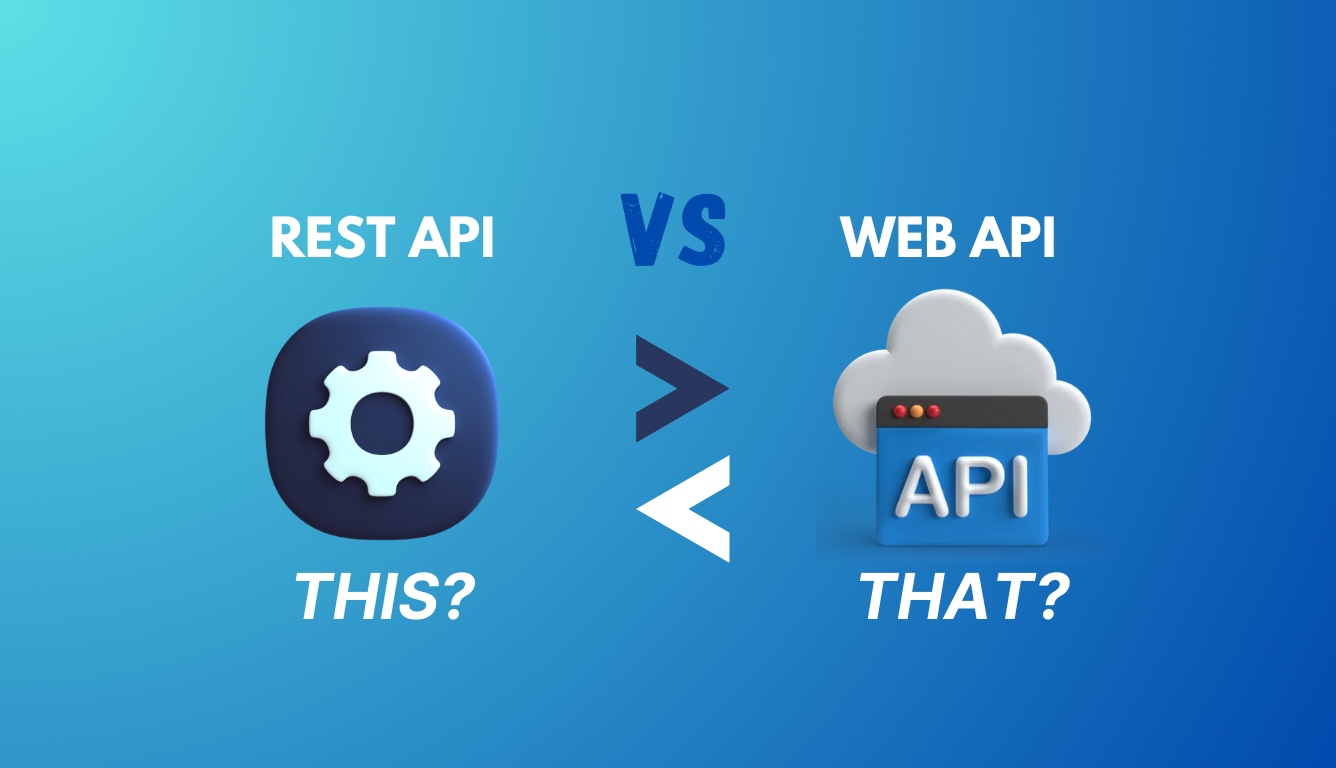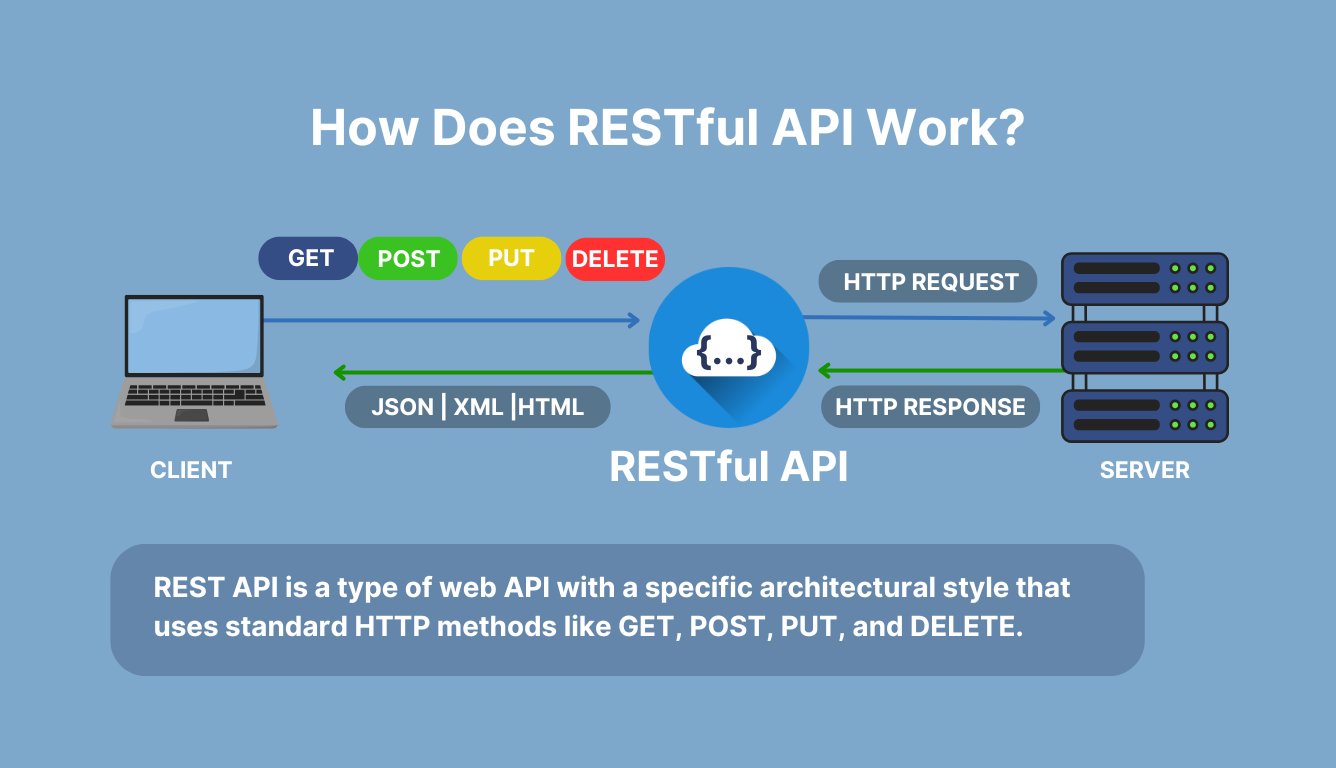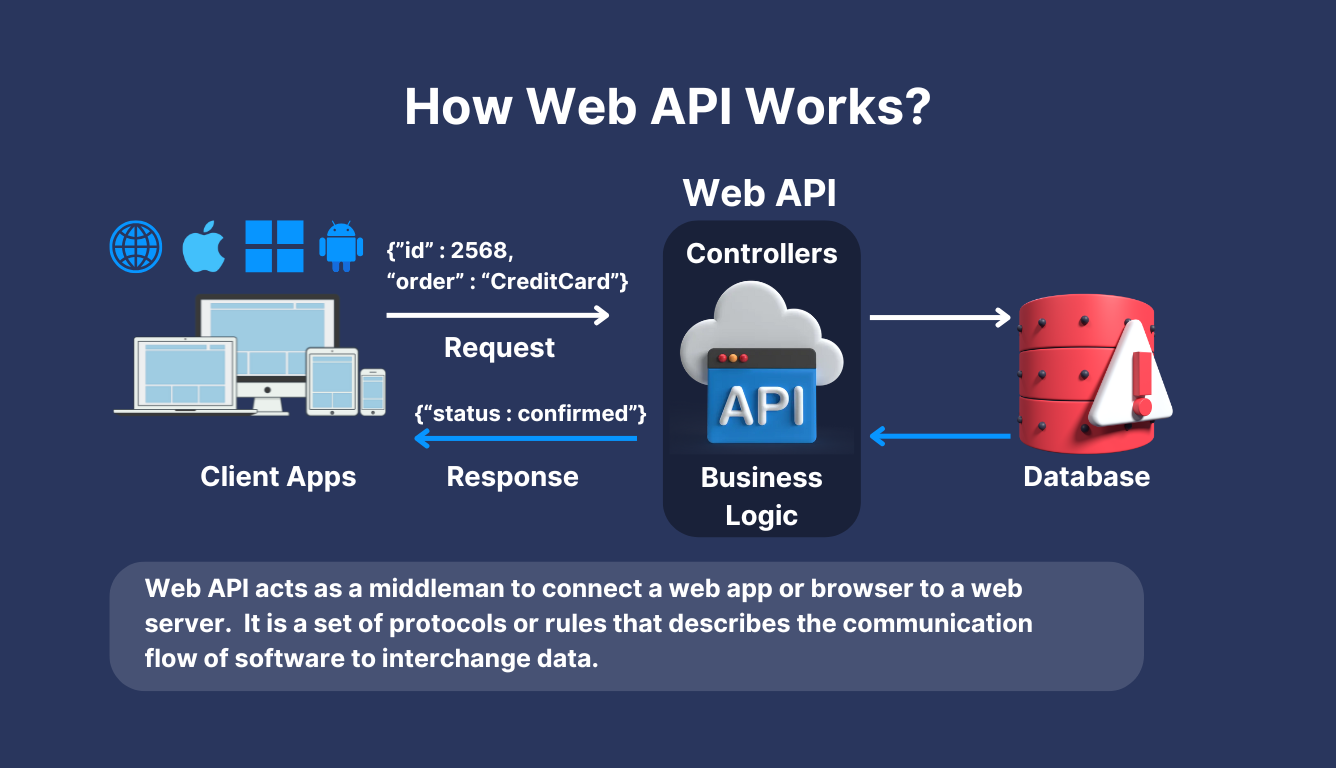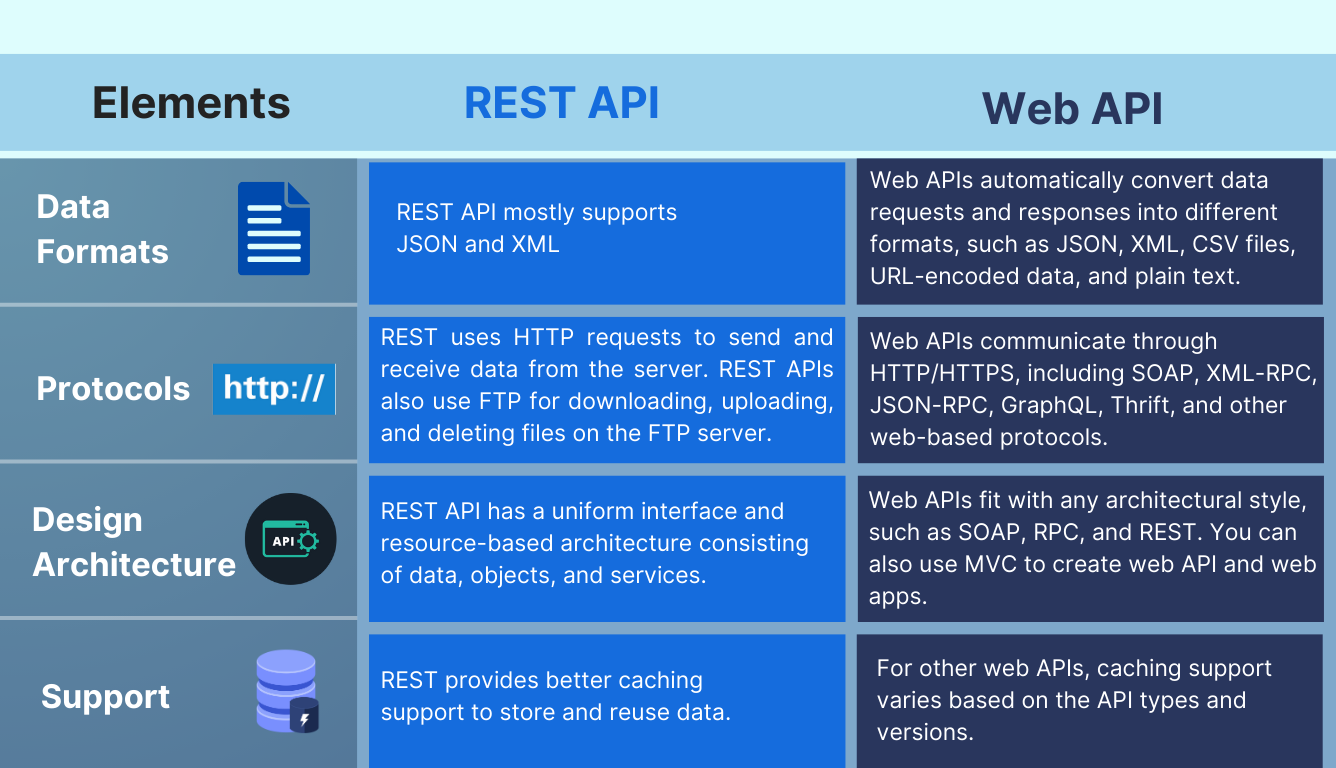







API (Application Programming Interface) is a set of instructions that build a communication bridge between two or more programs to share data and resources. It is a rapid way of building web services that help users (clients) send and request data from multiple devices without technical difficulties. You can categorize APIs according to their scope of use, protocols, and architectural types. The most commonly used API types based on the architecture and protocol are REST (Representational State Transfer), SOAP (Simple Object Access Protocol), and RPC (Remote Procedural Call). In this blog, we’ve highlighted the differences between REST and web API.
Open-source interfaces that facilitate developers to access web-based services using a definite protocol (HTTP & HTTPS) fall under web APIs. REST API is a type of web API with a specific architectural style that uses standard HTTP methods like GET, POST, PUT, and DELETE. Developers generally prefer RESTful APIs over web APIs for interoperability, ease of use, and other advanced functionalities. Let’s dive into the topic to learn more about how a RESTful API differs from a web API.


Representational State Transfer-REST or RESTful API is an architectural style that helps developers create or use web services. It interacts through HTTP requests to execute database functions (CRUD) such as creating, reading, updating, and deleting records. Based on common beliefs, REST is not a tool, protocol, or library; it relies on three elements- client, server, and resource. Hence, instead of making several database calls, you can seamlessly implement the components from various platforms to handle a large volume of data.
RESTful APIs are not only suitable for accessing web-based services, but they are also helpful for mobile app development. A few common examples of RESTful APIs are GitHub REST API, Twitter API, and other cloud-based apps. RESTful APIs are highly scalable and use connection-oriented architectures that make the communication process easier and ideal for frequently loading apps.
Here are a few sets of rules that REST APIs follow and make them unique from other web APIs:
Uniform Interface- RESTful API relies on a uniform interface principle that comprises HTTP methods like GET, PUT, DELETE, and POST. It simplifies and standardizes the interaction between a client and a server. It is highly flexible with calls, such as accepting or returning multiple data formats and alters with the right implementation of hypermedia. With an HTTP proxy server, REST APIs can manage heavy loads of data.
Adaptability- The adaptability of REST APIs is too powerful to transfer or receive any data from different servers. You can easily do the alteration of data in the database hosted on both the back-end and front-end servers. Hence, it helps developers synchronize the data within the website and makes it a convenient web tool for building web apps.
Security- REST API uses SSL encryption for data transmission, which makes it more secure and reliable than traditional web services. Additionally, RESTful APIs are effective for implementing web security using tokens, signatures, and TLS encryptions.
Web API is an internet-based interface that allows developers to access several web-based services through HTTP and HTTPS. It is a set of protocols or rules that describes the communication flow of software to interchange data. Web API acts as a middleman to connect a web app or browser to a web server. It is a web development concept that deals with the client side of a web application. The primary types of web API are public/open, partner, private, and composite.


Always remember that all web services are related to APIs, but all APIs are not web services. Every API has a unique architecture and protocol that fits your application development needs and business purposes. You can build web API using several tech stacks like Java, Python, JavaScript, and .NET. It helps you to implement several web development services that support caching, requests, versioning, headers, and other content formats. A few known examples of web APIs are WebGL, Google Maps, Twillio API, GraphQL, YouTube API, and other web-based platforms.
Choosing an API depends on various factors that include clear API documentation, an easy integration process, a developer-friendly interface, and security. Here are a few key differences between REST and web API based on certain parameters that might help you to integrate the right one:


In a wider sense, web API is a set of protocols that builds a bridge for web apps or software to communicate and share data with each other. Not all web APIs fall under the category of RESTful API. REST is a classification of API architectural style that works on HTTP or HTTPS requests for accessing data from multiple sources. Web API is a better option to manage complex data flow. REST API is highly adaptable and flexible with data formats and protocols. Both RESTful API and web API have their distinct features and are appropriate for amplifying the performance of web or mobile apps. After evaluating the features and functional differences of REST API vs API, you can choose the suitable API key for your business. Drop your comments below to get more information about API integration and development.
Website Development | Mobile App Development | Application Development
We will definitely get back in touch with you over mail within 12 Hours.
In-case you have not heard from us within 12 hours, kindly check your spam once.
I'm a software consultant. I've 7+ years of industry experience. I'd love to connect with you and brainstorm your custom software needs. It's my responsibility to find you the best solution.
ANAND GUPTA
Drop your details and we'll get in touch with you within 12 hours.
Reach us for
Talk to us